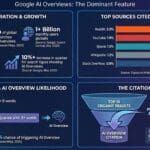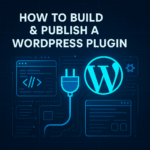Panda and Penguin Google’s recent changes to how it ranks websites have started to have an effect on many businesses and the amount and type of SEO required to achieve high rankings has changed. Our previous blog (https://opace.agency/blog/post-panda-SEO-checklist-part-1) focussed on on-page SEO, so here is a brief guide to off-page SEO that you should also consider.
Off-Page SEO Checklist:
1 – Site Speed and Server Time
Google Caffeine made load times a SEO ranking factor so make sure your website sits on a fast UK-based server, and any avoid downtime.
2 – Link building
Links are still important for SEO but the two factors to think about are quality and timeliness. You want links from relevant and well-ranked websites – and you want these to be built over time. Google will penalise links to poor quality and/or unconnected sites and links which are created very quickly may get a ‘slap’ for looking artificial – this will look like a spamming activity. Bad practice here can lead to Google removing your site from searches – so use an ethical internet marketing agency for any link building activity. Avoid automated tools.
3 – Link Anchor text
Don’t over link a keyword – it should perhaps account for no more that 20-30% of your links. Include generic links (e.g. ‘read more’ and ‘visit http://www…’) and naked links to create a variety.
4 – Content Marketing
Google likes to see links to your site from blogs, directories, Wikis and other authoritative and relevant web pages. Again quality is the key here – quality content on quality websites is the thing to aim for.
This is one of the major changes and will mean a regular commitment to engage with clients via social sharing platforms such as Facebook, Twitter, LinkedIn, Google+ etc. You will need to link back to your website and use keywords in titles, copy and links without over doing it. It’s likely you will need daily interactions to build a following, and should aim to engage for 80% of the time and sell for just 20%.
6 – Add visual interest
Website visitors love non-verbal content so images and video is important, but for maximum effectiveness any such content needs to optimised, so place keywords carefully in URLs, tags, titles etc.
7 – Google +
Perhaps it is no surprise that Google gives increasing prominence to its own social platform. Whilst its use is still compared to Facebook, its importance for SEO is growing so you should set up an account, populate it with relevant content and start building your circles. Together with on-page SEO detailed in our earlier blog, actioning the above will help you achieve good search engine rankings and give you that competitive edge. If you found this tutorial helpful then please click Like or Tweet or leave a comment. Remember to watch this space as we will be releasing a range of SEO blogs over the coming months. Our readers can also find our Opace Facebook page at http://www.facebook.com/OpaceWebDesign. For all the latest goings on, you can keep up-to-date with Opace on Twitter https://twitter.com/OpaceWeb. And we also now have an Opace Googleplus page live at https://plus.google.com/111516148099633923012/posts.
Image credit – David Stanley





0 Comments